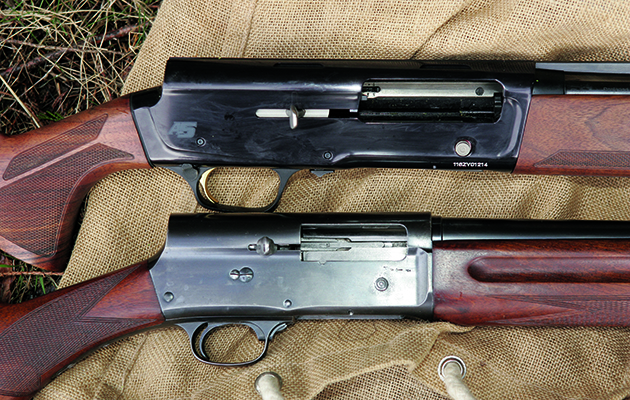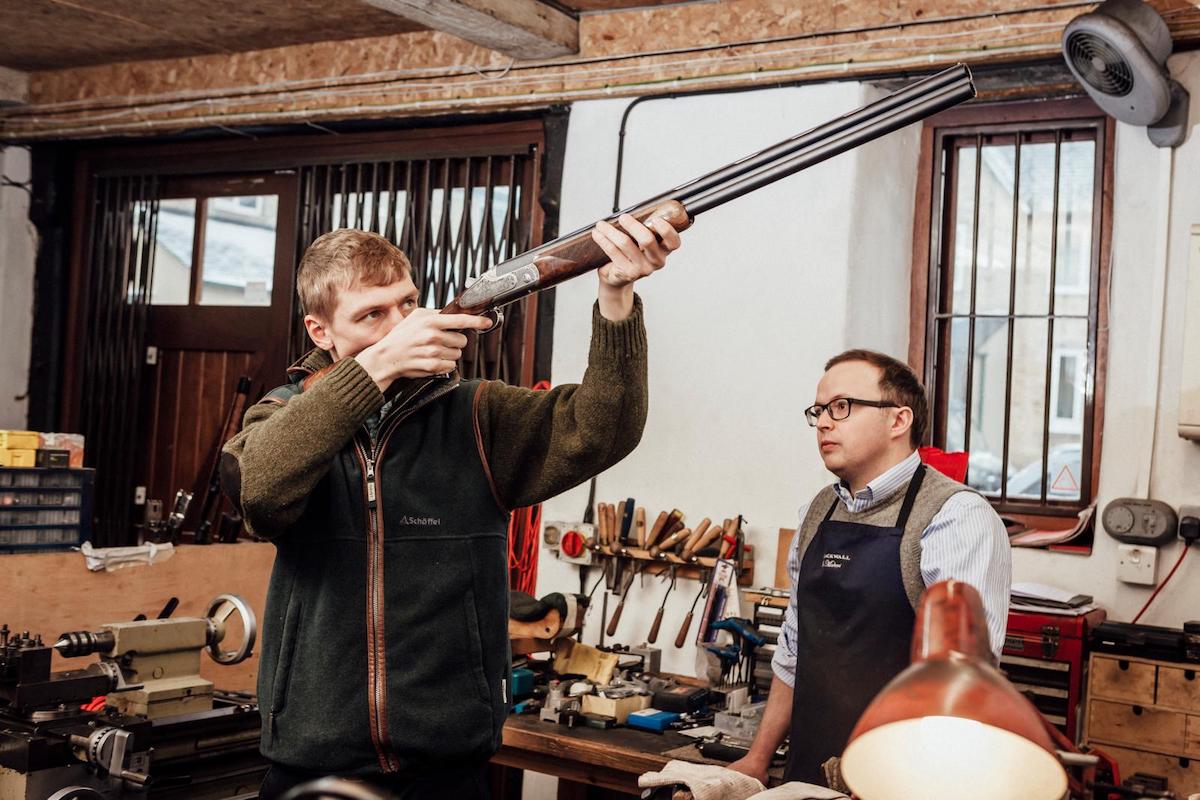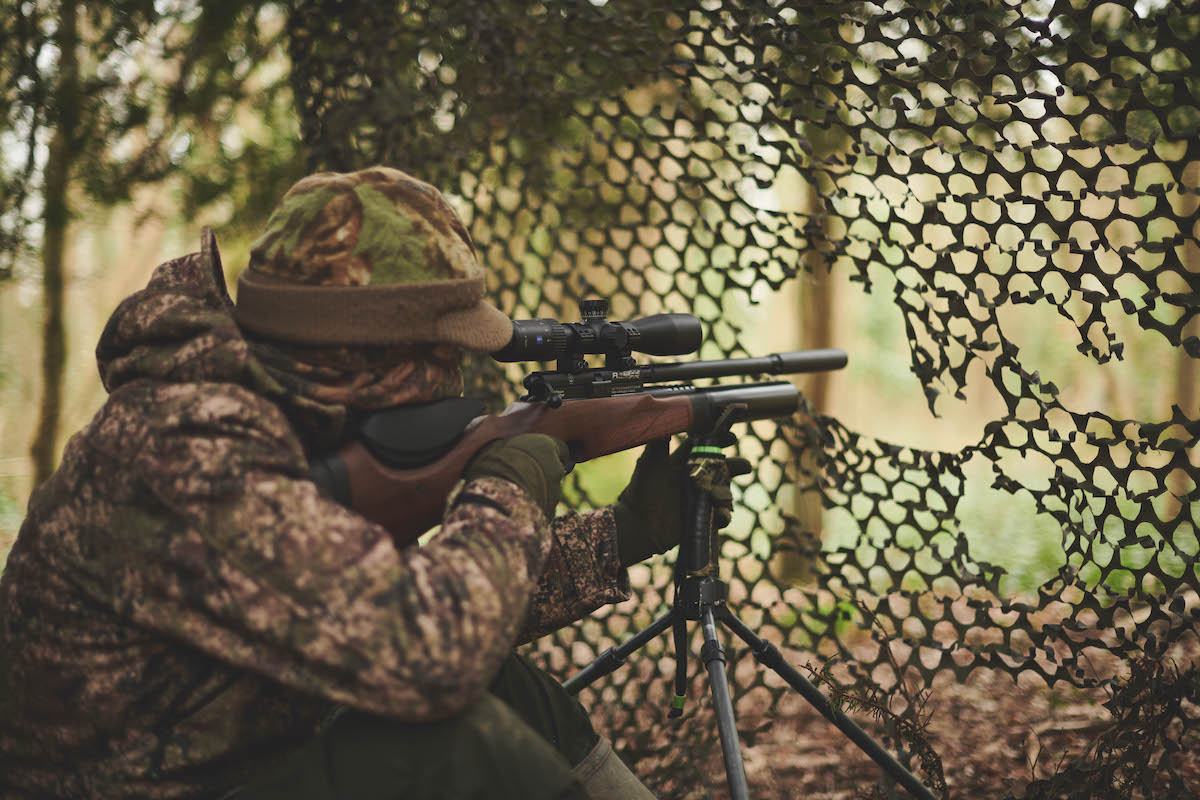Why you should love semi-autos
Dislike semi-autos? Shooting instructor, Dr Malcolm Plant might be able to change your mind

The semi-auto's lightweight and lower recoil makes it a really useful gun for beginners
What do Marmite and semi-auto shotguns have in common? The similarity is that they both divide opinion! Some people love both, some won’t touch either. I think the Marmite division is truly just a matter of taste, but unfamiliarity and lack of awareness does contribute to some shotgun users having an unreasonable phobia where autos are concerned. I’ll nail my colours to the gunroom door here and say that, as a coach, I really like semi-autos. In fact I love ’em.
Why? Simple: the auto’s single barrel makes the front end of the gun much lighter and more controllable – a really useful asset for beginners and slightly built individuals. Couple this with the lower recoil associated with the reloading mechanism of the semi-auto, particularly gas-operated versions, and you’ve got a winning combination.
Furthermore, it’s easy for a coach and client to use. On completion of a training shot, the client can receive advice and simply offer the open chamber for reload by the coach, who drops in a cartridge, pushes the reload button and off they go again; it keeps the lesson at a very focused pace.
Like double-barreled shotguns, semi-autos come in all the usual bore sizes; from 12, 20 and 28-bore. All have a selection of chokes. Autos in .410 gauge are available as well.

Semi-autos vary depending on the manufacturer
Familiarity breeds consent
One the peculiarities of the range of semi-autos is the variety of slightly different mechanisms chosen by the different manufacturers, which I suspect creates some uncertainty in potential users.
For instance, pictured above is three guns by different manufactures. To close the action of the Beretta (left) and the Franchi (centre), the silver button on the side of the action is pressed. Further cartridges can be fed into the magazine of both guns, passed the silver carrier flap and under the fore-end.
With the Remington (right) the silver rectangular button on the magazine carrier flap also closes the action, so both closing the action and filling the magazine can be accomplished as the second cartridge slides into the magazine.
The Beretta and Franchi have the safety-catch button on the front of the trigger guard, the Remington’s safety button is on the rear of the trigger guard.
In the UK, the magazine tube of semi-autos is restricted to allow a maximum of two cartridges in the magazine plus a third in the chamber, so you can get three shots. Although, let me remind the clay shooting competitors in the audience that the rules allow only two cartridges to be loaded in total.
It is possible to possess a semi-auto which will take more than two cartridges in the magazine, but a firearms license is required in the UK to do this. You would need to establish a serious vermin control requirement, for example, to be granted this certificate.
Visible safety
A common gripe about semi-autos is that they don’t open like a ‘’break action’’ double-barrelled shotgun. This is true, but if you know what to look for in semi-auto safety, it is immediately apparent, i.e. the open receiver slot where the cartridge is loaded. Any user of a semi-auto should carry the gun so that this is apparent. Many owners of semi-autos put safety flags in the loading slot. For some historic reason the safety indicators are often red, or with red tapes. I change these to green tapes – green for safe!

Many owners of semi-autos put safety flags in the loading slot to show the gun is safe
Wind power or inertia push?
So what about the different mechanisms found on semi-autos? In the old days, when the cartridge fired it pushed the shot down the barrel and, at the same time, sent the bolt, cartridge extractor, firing mechanism and reload system back up the receiver, to start again. Early Browning semi-autos worked like this and the company has a lot of experience making guns, so would know what worked. With rifles there was always enough energy to ensure this re-cock system worked. This early shotgun reload mechanism is known as the long recoil system. But lighter loads, and lighter recoil in shotgun cartridges, presented a challenge.
Thankfully, Beretta and Remington then developed the gas-operated system more than 50 years ago and this useful technology is still going strong and under continual refinement today. With this system, it all kicks off when the shot goes speeding off down the barrel, propelled by hot gas. A small proportion of this high pressure gas is bled off through holes in the barrel into the re-cocking system. This is then pushed back by gas pressure to extract the spent cartridge, reload a new one and reset the firing mechanism. Because this gas re-cock takes a little time, the recoil effect is spread out over a longer period and this gives less perceived recoil for the operator.
That’s what the theory says anyway, and that’s my experience. However, a disadvantage with gas-operated shotguns is that they need regular and thorough cleaning to ensure the re-cocking mechanism continues to operate smoothly. In short, burnt powder residues from the cartridge can foul up the bleed holes and recoil mechanism if not removed.
Then again, the up-side to the gas system is the flexibility in the type of cartridge load that can be handled comfortably; even heavy load 3in magnum cartridges, the wildfowler’s preference, can be softer on the shoulder through a gas operated gun.

The gas operated semi-auto system’s load flexibility means even the wildfowler’s preferred 3in magnum cartridges can be handled carefully
Foul subject
To overcome gas fouling, another Italian gunmaker, Benelli designed a novel inertia recoil mechanism that does not involve gas bleed to power the re-cock system. In this gun the action bolt, which houses the firing pin, is an easy sliding fit in the action body. And within the bolt is a strong short spring.
When the cartridge fires, recoil compresses the spring, which almost instantaneously recovers and fires the bolt backward to eject the cartridge and re-cock the system. So unlike the old fashioned long recoil mechanism, re-cocking is a rapid two stage process – the spring compresses, then the spring propels the bolt backwards.
Many shooters don’t think that this absorbs as much recoil as gas but the benefit is no fouling; and Benelli were the first to introduce 3.5in chambers for our wildfowling colleagues, so they obviously believe heavy cartridge loads are not a problem.
There are many different semi-auto makes on the UK market and many are very good value for money. American and Continental European brands predominate, but in recent years Turkish manufacturers have become more apparent. I was having a look at the USA manufacturer Weatherby on the web and noticed a co-operation with a Turkish supplier to make and they market a 28-bore semi-auto with an aluminium receiver. Total weight is just 5.5lbs. Now that really would be a good coaching gun for youngsters, with the right cartridge selection.








